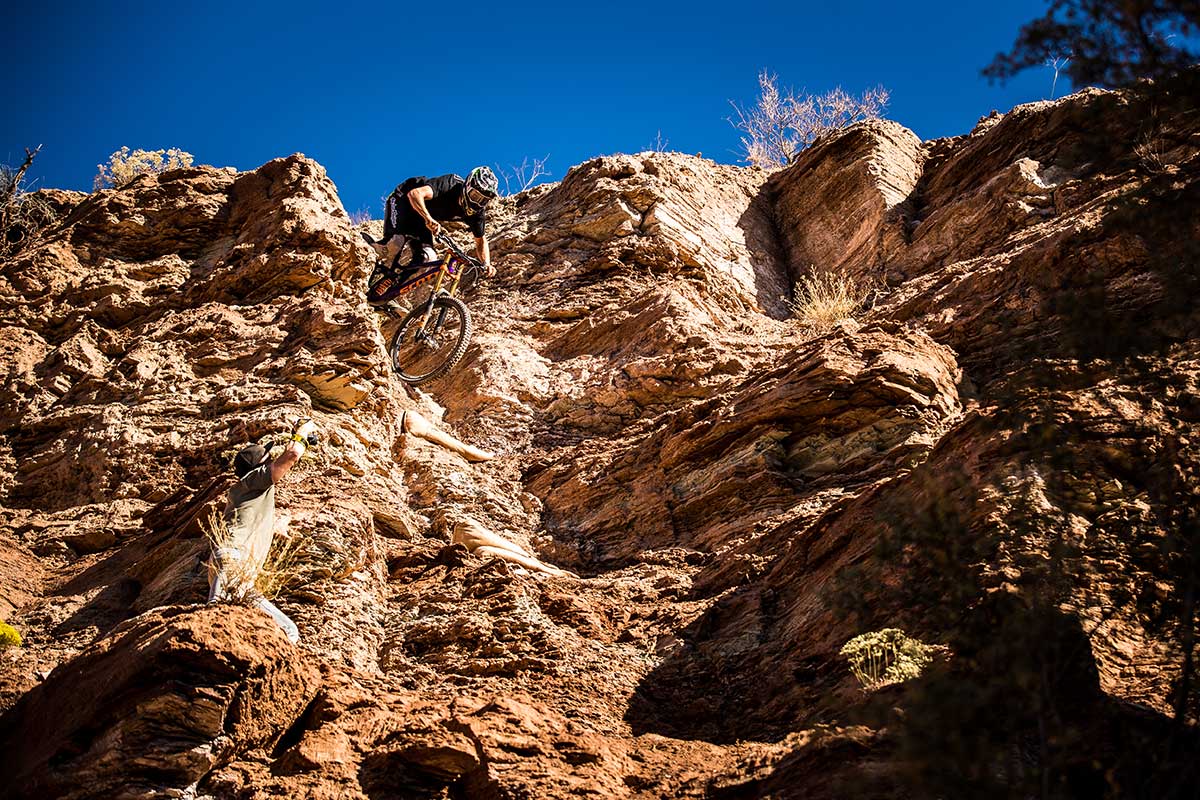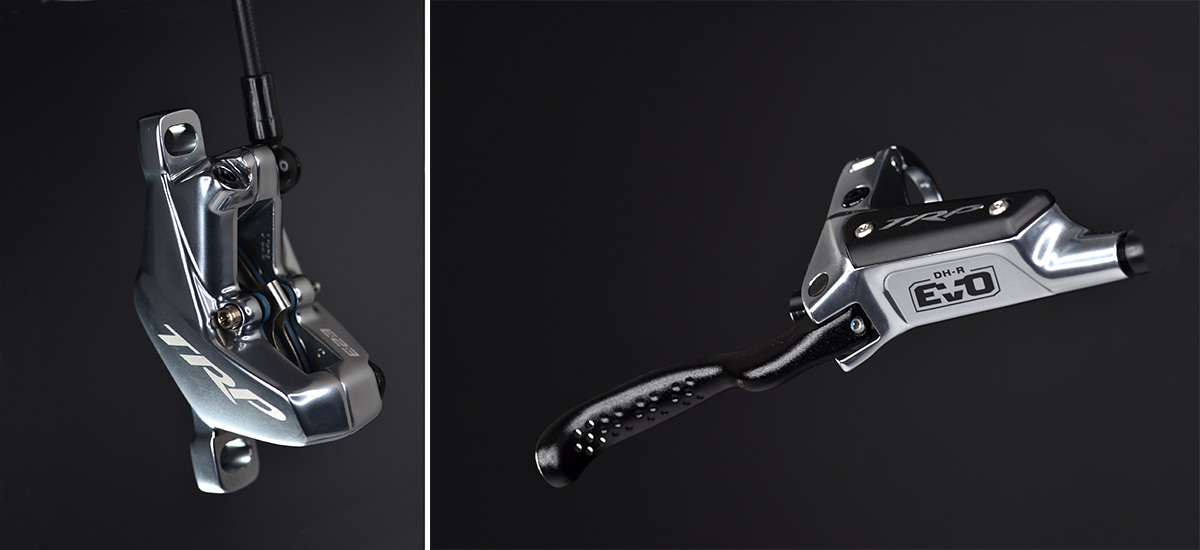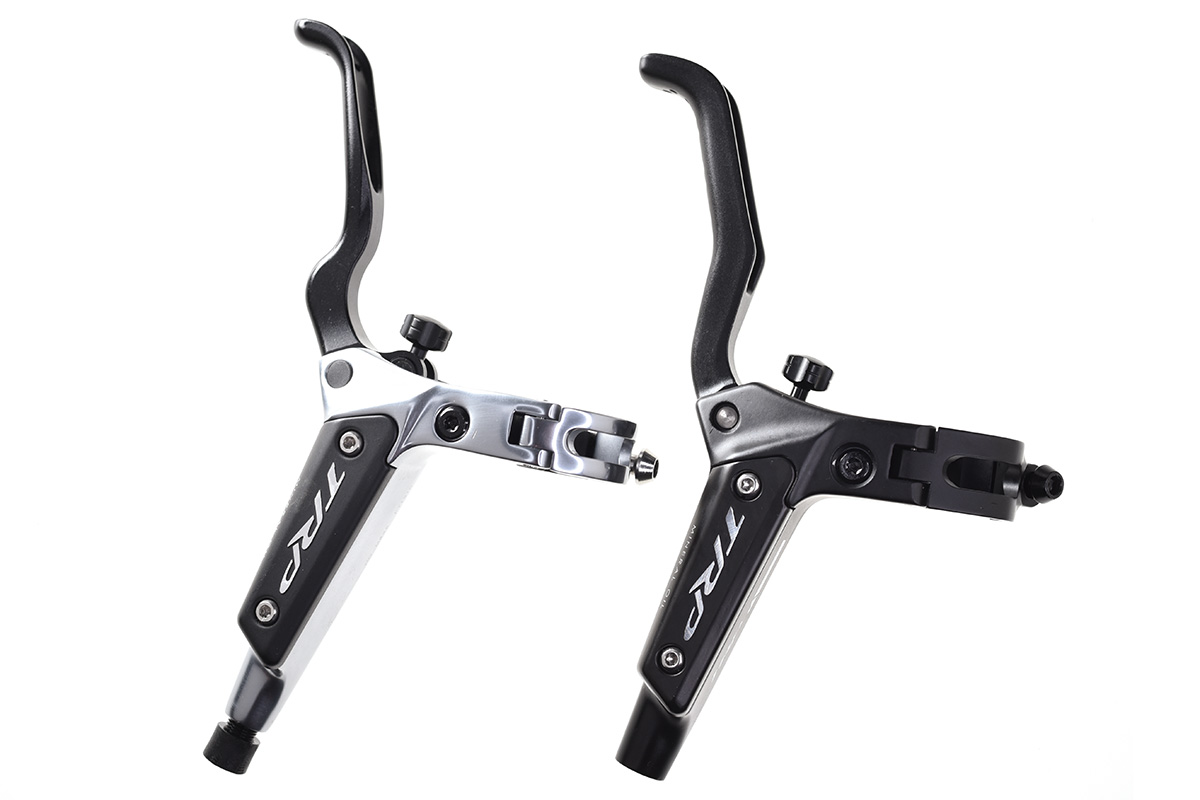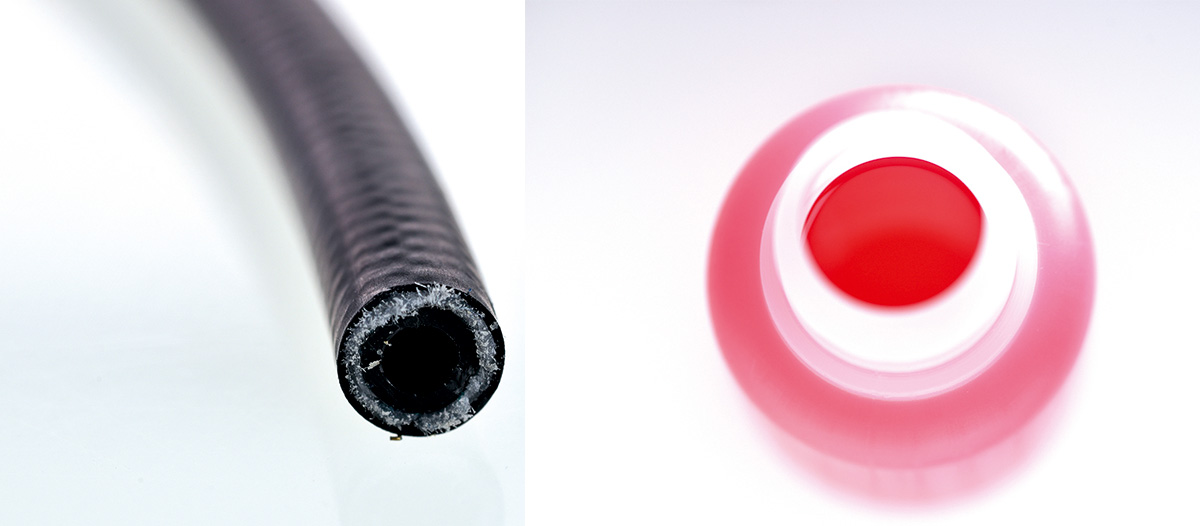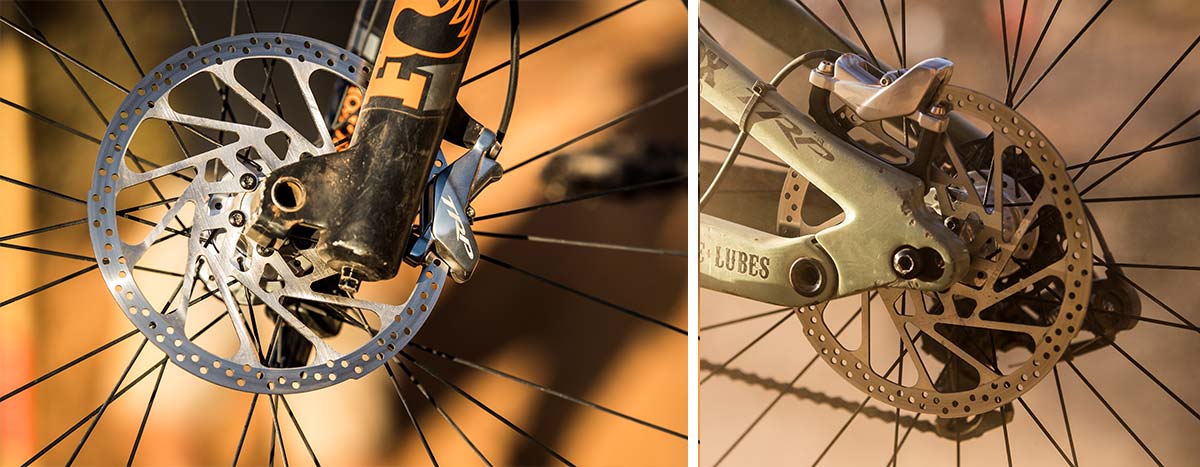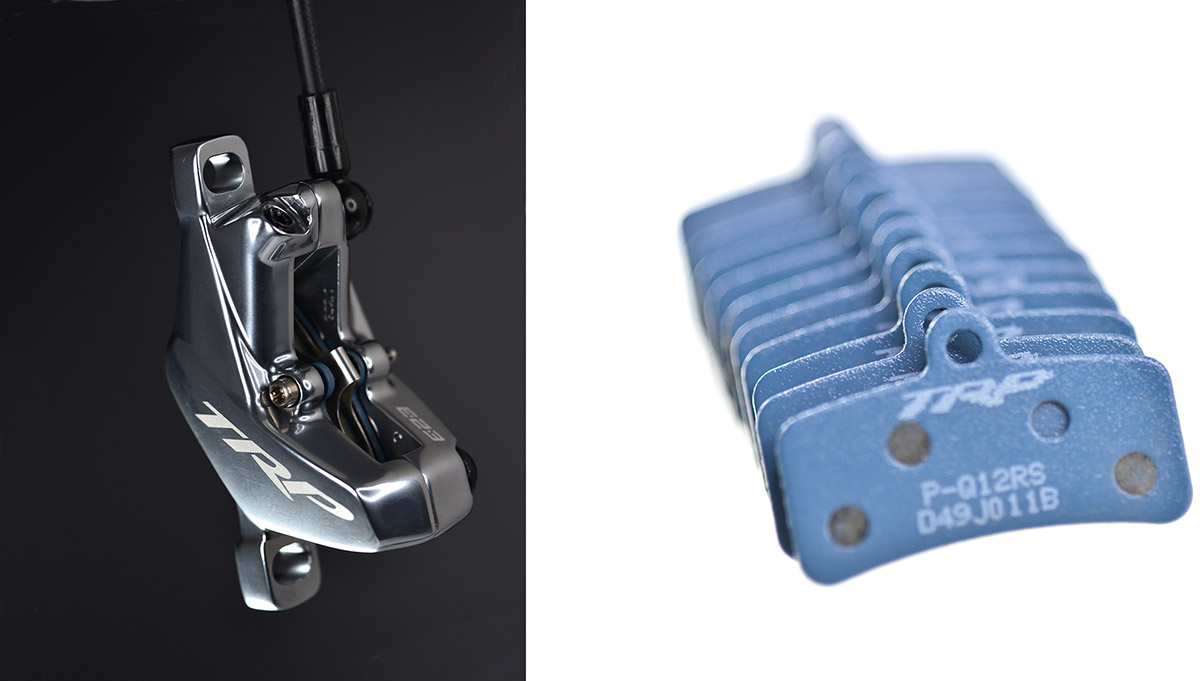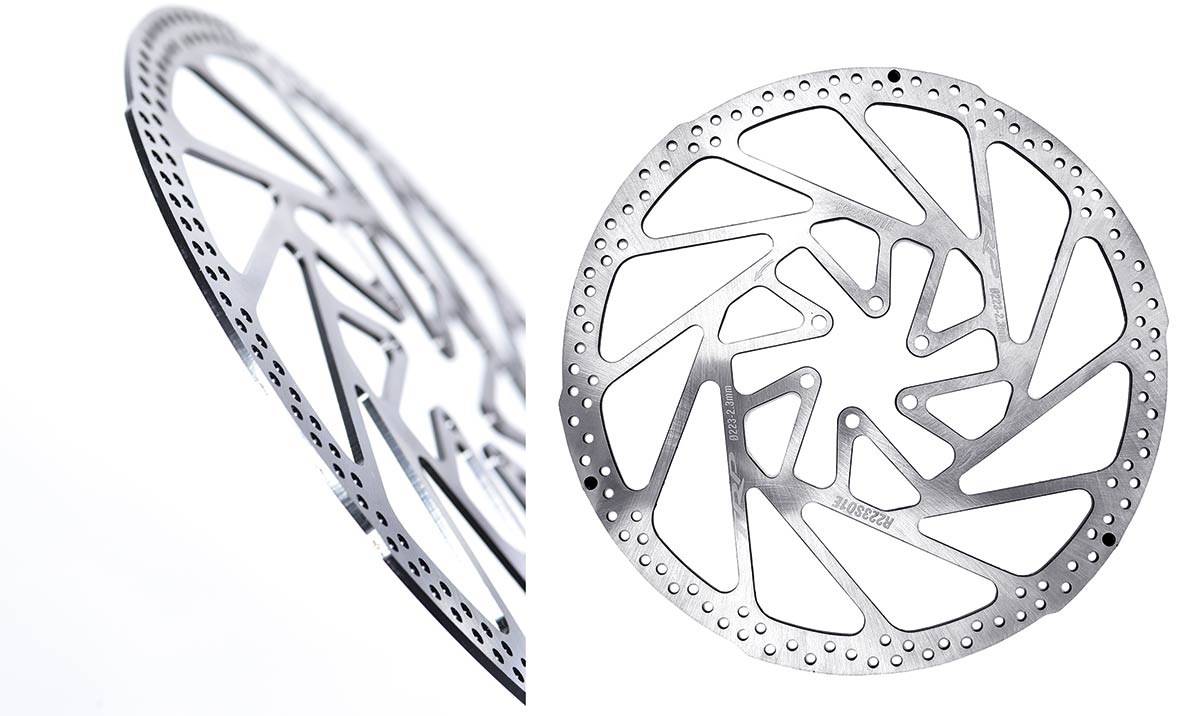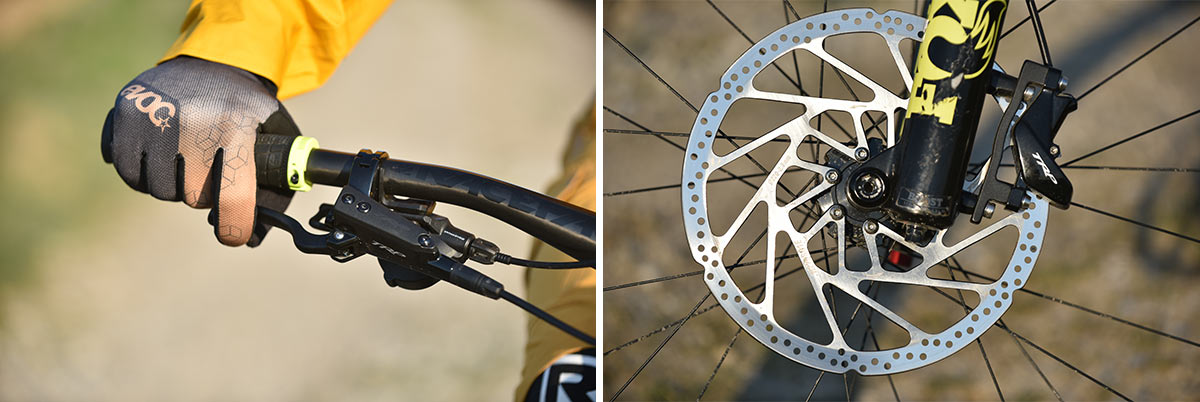A hundred race days later, TRP Cycling are ready to release the new TRP DH-R EVO brake for big-wheel fast-track downhill racing. Built around TRP’s new 2.3mm thick disc rotors, the DH-R EVO brake is TRP’s most powerful brake yet.
Debuted by Brendan Fairclough at Red Bull Rampage, the DH-R EVO has since seen some rigorous testing by Neko Mulally, Marine Cabirou and Aaron Gwin. This is a complete redesign of the G-SPEC DH-R, with new lever blade, new mineral oil, new master cylinder piston, hybrid calipers, new everything. We also have the tech on TRP’s new E-MTB braking solution.
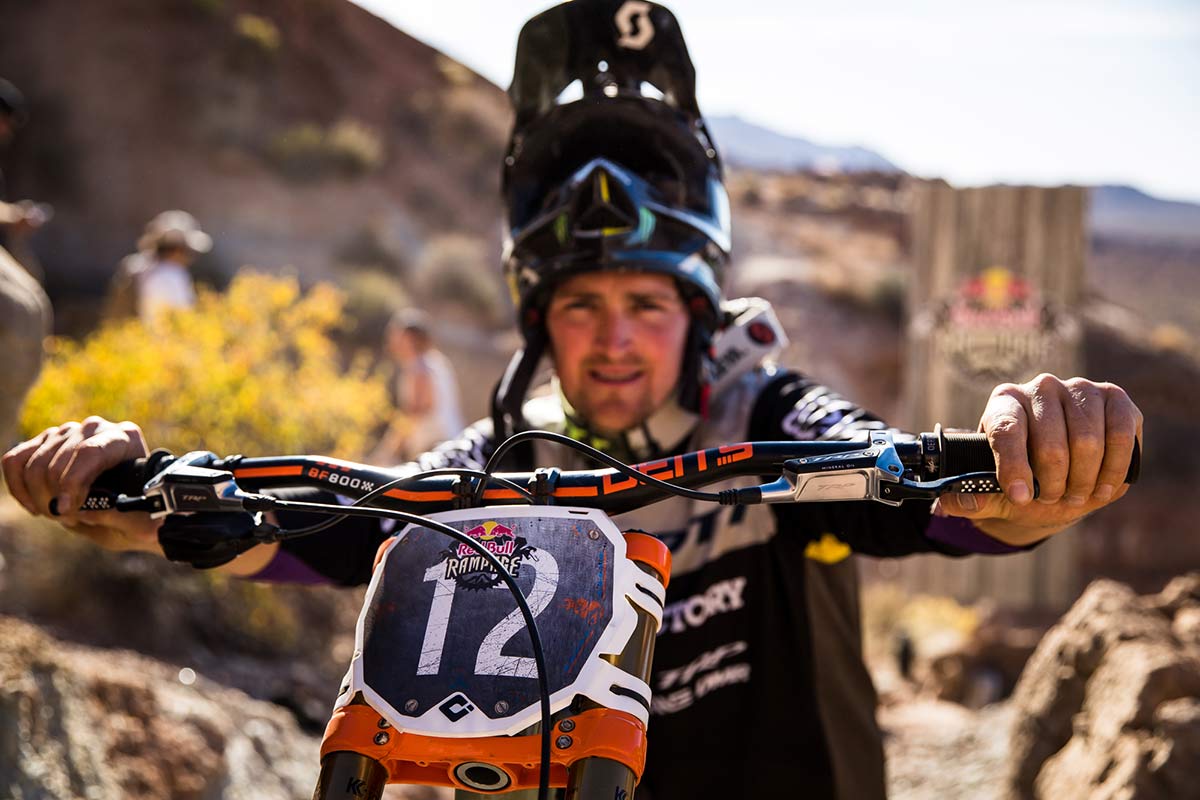
TRP DH-R EVO tech specs
TRP have put in some serious R&D graft to bring this new downhill brake to market. Seven months of work have gone into it, including lab and race team testing, even the installation of a brand new brake testing instrument at TRP’s HQ in Changhua, Taiwan. As a result, they reckon this is their highest quality brake ever.
- Intended Use: Downhill/Enduro/E-MTB
- Hydraulic Fluid: Mineral Oil
- Rotor Size(s): 6-Bolt 180, 203, 220, 223mm; CL 160, 180, 203mm
- Rotor Thickness: 2.3mm
- Pistons: 4
- Lever throw adjustable
- Claimed weight: 310g w/o rotor and adaptor
TRP say the new DH-R EVO is an evolution of their G-SPEC DH-R brake, but with a new lever blade, mineral oil, master cylinder piston, Performance Flow calipers, even new brake pads specifically designed for it, perhaps the word “revolution” is more apt. Let’s start with the bit on the bar.
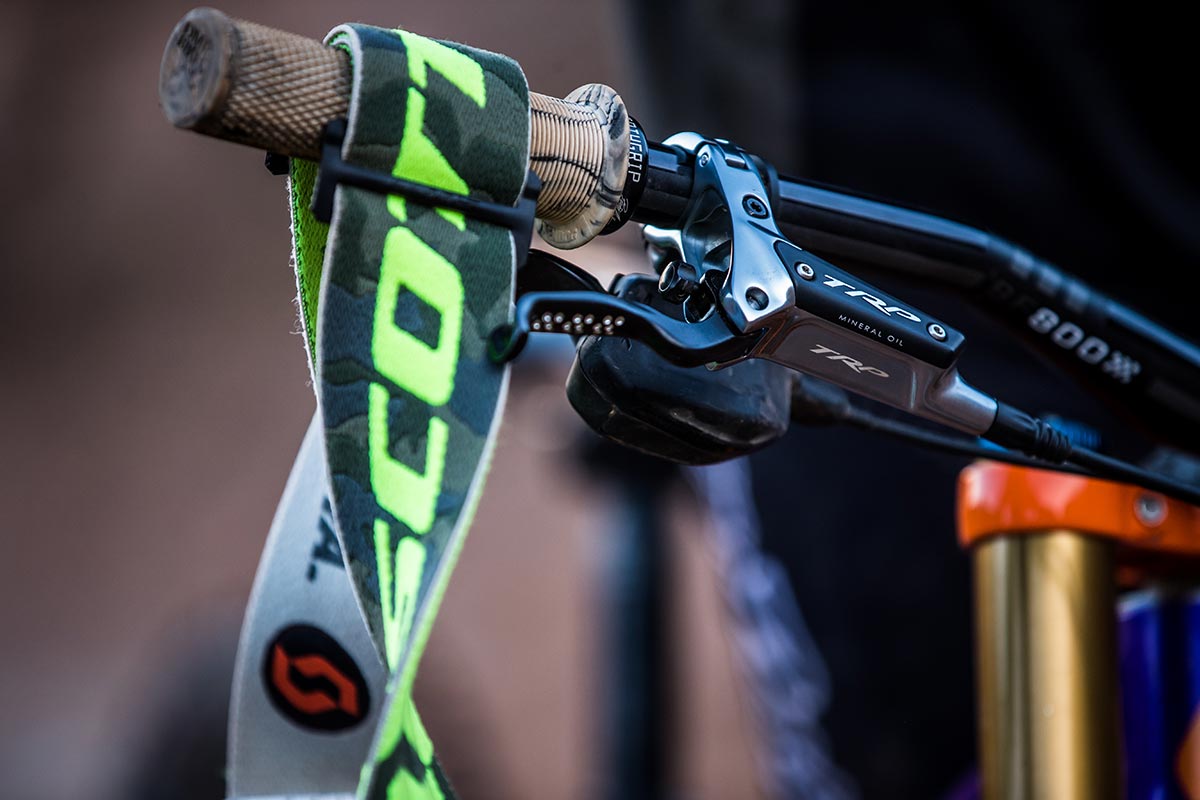
The TRP DH-R EVO lever blade is a new design, optimized for one finger braking with ergonomics in mind. The blade has a lightweight aluminum body, with dimples for improved grip on the pull area.
Inside, the DH-R EVO features a 9mm master cylinder piston. This smaller piston size results in a leverage ratio that delivers more power, reducing arm pump for the rider. The lever throw offers tool free adjustment via an indexed mechanism behind the blade, allowing the rider to dial in the most comfortable reach on-the-fly.
The lever throw adjustment knob is indexed so riders have the ability to dial in the exact same lever throw on either side without having to guess…just count and match the clicks.
The EVO’s bite point is not adjustable however. TRP chose to not include this because it makes the brake more simple and dependable to use. They say that, coupled with the new flow caliper, it actually gives a very constant bite point all around.
A new 5mm hydraulic hose connects the master cylinder to the caliper. The larger diameter makes it stiffer for better hydraulic pressure. It also boasts increased heat stability and TRP say it is optimized for internal routing.
Flowing inside is a new reduced viscosity mineral oil for better flow. The new oil also boasts improved heat stability up to 230°C (446°F).
4 Piston E-Caliper
TRP say the hardest part of the DH-R redesign process was the redesign of the oil flow inside the caliper. “[This] was the biggest challenge and took the most time and effort. After turning all our ideas into prototype solutions, we tested those in the lab and with our athletes. The team mechanics gave us feedback about bleeding handling, and we paid attention to every little detail to narrow down the options. To find the best solution was like searching for gold.”
The resulting caliper, housing four 16mm hybrid pistons, has increased stability, faster oil speed flow, a quicker response at the rear brake and reduced bleeding times. We got the low-down from Sean Doche at TRP:
“The oil flow is now parallel on each side and opened up so there is less chance of oil pooling and actuating on one side only and given the open nature of the flow, it actuates the pistons with less resistance at the same pressure. Along with this flow change we have seen the ability to have a much easier bleed and a massive decrease in the amount of heat the caliper itself faces. The new flow combined with the ability to run 2.3 mm rotors makes both of these brakes [EVO and E-MTB] equally difficult to heat up on long descents giving little to zero brake fade for both models.”
Developed especially for the new TRP DH-R EVO and E-MTB brake are new brake pads with a new performance resin compound. The new compound is said to have increased heat stability and a shorter bed-in process. TRP offer the blue Performance Resin pads in addition to Copper full metallic pads too.
The DH-R EVO brake is designed around thicker 2.3mm rotors (1.8mm is standard). The additional thickness gives rise to an 8% increase in heat stability and a 47% increase in lateral stiffness allowing the rotor to better resist deformation.
With the massive uptake of 29″ wheels, TRP have responded with a 223 mm rotor size. The faster-rolling, heavier wheels with heavier tyres mean the 203mm standard just doesn’t quite cut the mustard anymore. The larger 223mm rotor provides greater braking leverage on the larger wheels. The 2.3mm rotors are offered in 6-bolt and center lock designs, but the 223mm rotor is 6-bolt only.
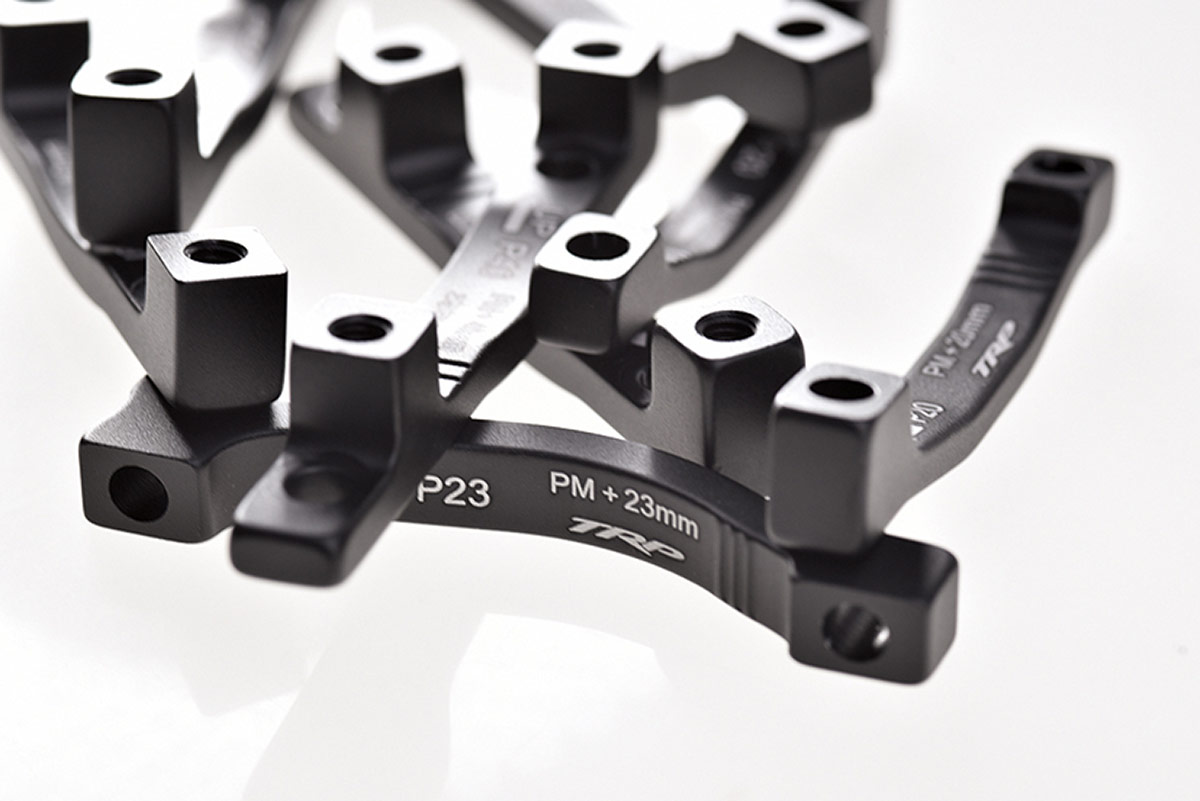
TRP E-MTB Brake
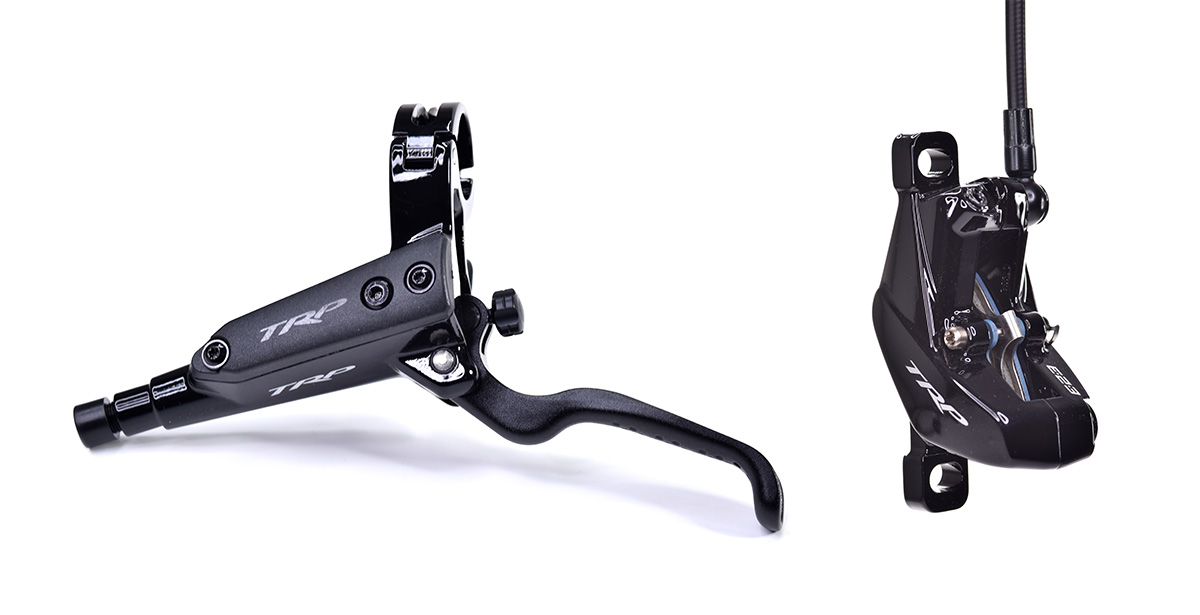
More brake for more bike. The additional weight that comes with an e-MTB demands more powerful braking for reliable stopping. Thus, like the DH-R EVO, TRP’s new E-MTB brake is also built around thicker 2.3mm rotors for better heat management and increased lateral stiffness. It gets the new mineral oil, stable at temperatures of up to 230°C, and new heat-stable Performance Resin pads. The TRP E-MTB brake also gets the new ergonomic lever blade and 5mm brake hose, all at a slightly lower price point.
The TRP E-MTB disc brakes feature the same E-Caliper as the DH-R EVO brake with four 16mm hybrid pistons. These use a stainless outer section with ceramic inside. The design not only saves weight, it acts as a heat barrier to improve heat resistance by 28%.
TRP DH-R EVO vs. TRP E-MTB
The main differences between the DH-R EVO and E-MTB brakes are the finish, master cylinder piston, lever design and finally, price.
The EVO brakes are anodized silver and hand polished, whereas the E-MTBs are merely painted black. This is one of the reasons for the reduced price point of the E-MTB brakes. Additionally, the E-MTB brake uses TRP’s trail style lever while the DH EVO uses the Quadiem style lever.
Finally, the master cylinder piston on the EVO brakes measures 9mm, while the E-MTB brakes uses a 10mm piston. This gives the EVO brake a lot more power over the E-MTB.
Why does a smaller master cylinder piston mean more power?
“In a phrase, it changes the hydraulic ratio. This ratio is Force = (Pressure/Area) where Force is the final power output in newton meters, pressure is how many pounds are being applied to the system, and area is the surface area of the master cylinder piston. Therefore, by decreasing the size of the master cylinder piston, we are increasing the amount of pressure being applied which in turn increases the amount of force output.
This is an inverse relationship where decreasing the diameter of the piston from 10mm to 9mm actually increases the amount of power while making it easier to pull because of the smaller surface area moving the oil.” – Sean Doche at TRP Cycling.
TRP are now one of three brake manufacturers using a 9mm master cylinder piston. The others are Trickstuff with the Maxima and Hayes with the new Dominion.
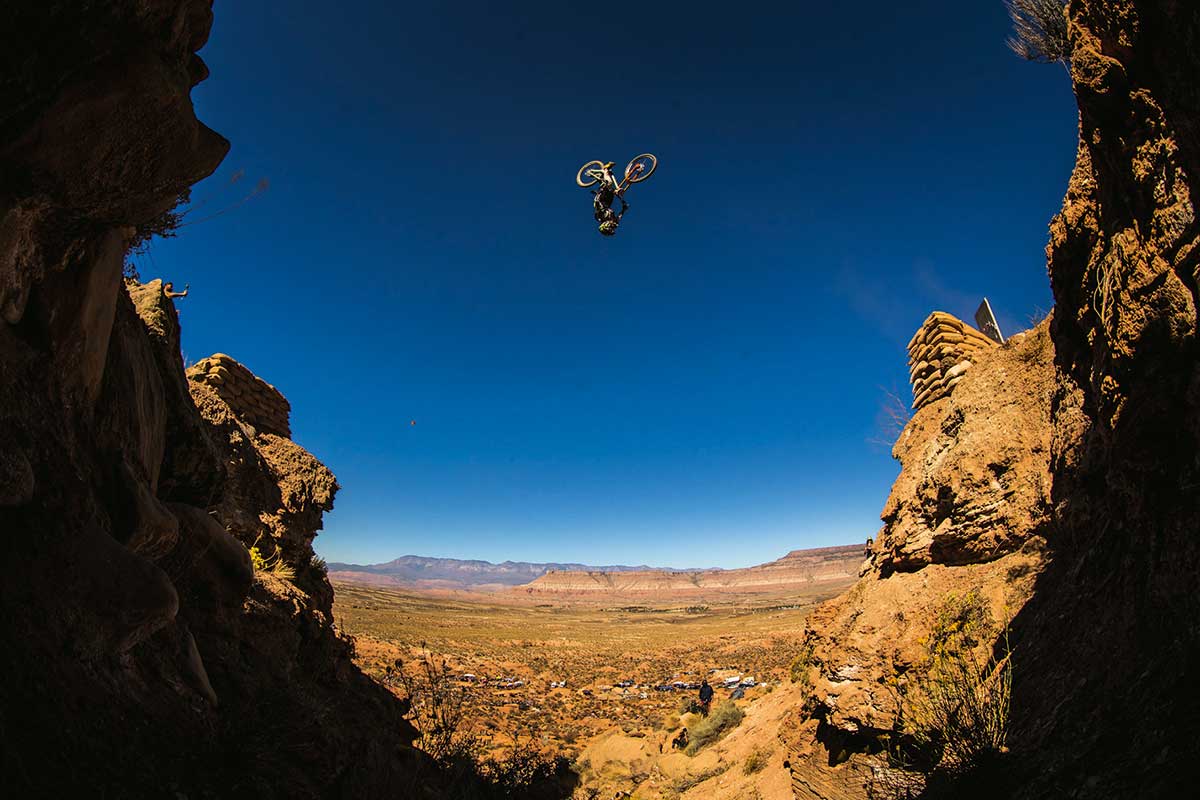
Pricing & Availability
The new TRP DH-R EVO brake and the TRP E-MTB brake are available today with same day global delivery. The DH-R EVO retails for $229.99/per wheel and rotor pricing runs anywhere between $39.99-$64.99 depending on size and 6-bolt/center-lock option. The new TRP E-MTB brake is yours for $199.99/per wheel.
